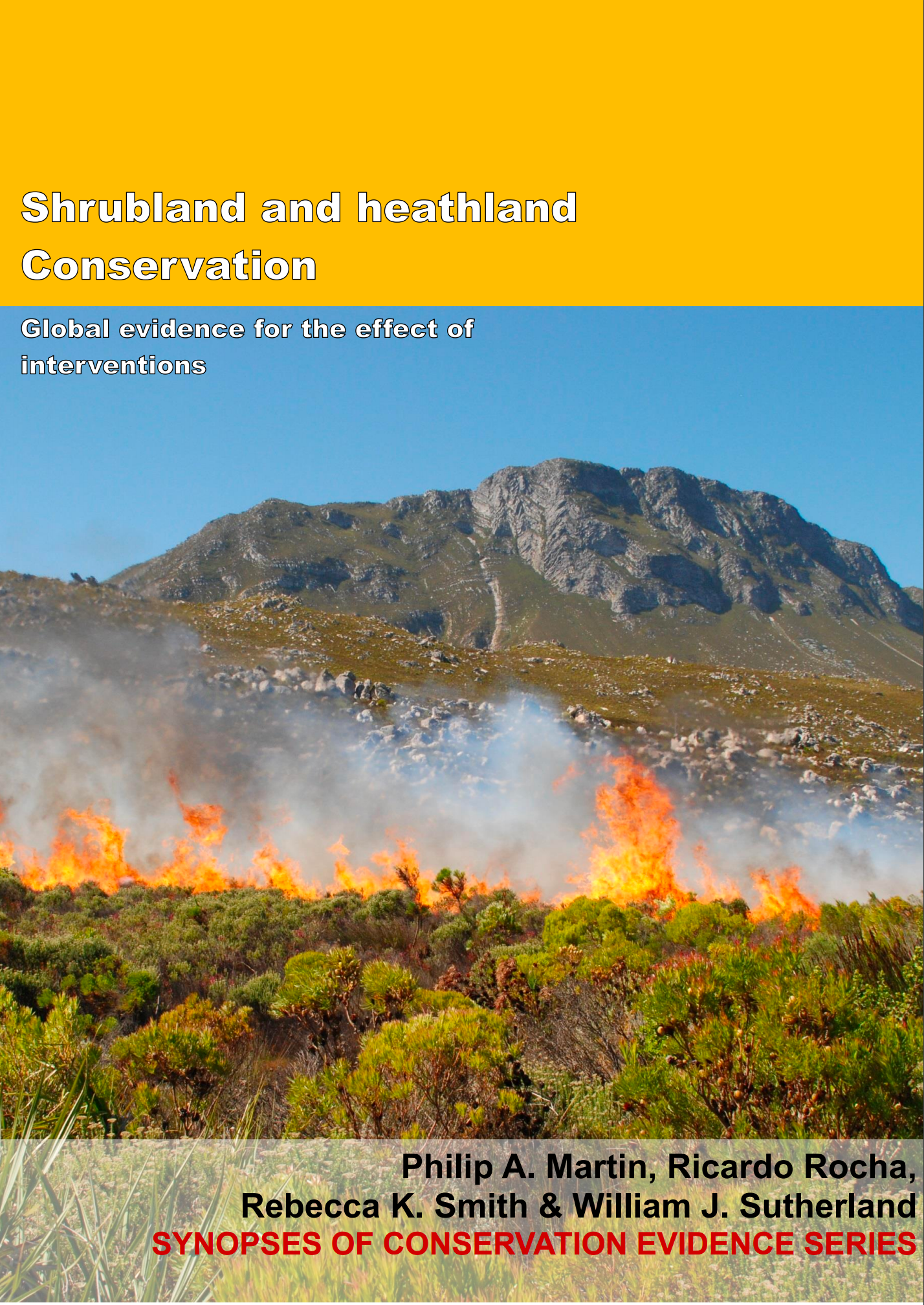Add mulch to soil (alongside planting/seeding)
-
Overall effectiveness category Unknown effectiveness (limited evidence)
-
Number of studies: 2
View assessment score
Hide assessment score
How is the evidence assessed?
-
Effectiveness
5% -
Certainty
10% -
Harms
0%
Study locations
Supporting evidence from individual studies
A randomised, controlled study in 1994–1998 in a succulent karoo shrubland in Western Cape, South Africa (Beukes & Cowling 2003) found that applying mulch, followed by sowing seeds of shrubland species increased the number of seedlings of these species, but did not increase seedling survival. Applying mulch followed by seeding with the seeds of the species Karoo bietou Tripteris sinuata, Spiny ruschia Ruschia spinosa and Gha grass Chaetobromus dregeanus increased the number of seedlings of these species compared with unmulched, unseeded plots (data not provided). However, applying mulch followed by seeding did not increase the survival of seedlings relative to unmulched, unseeded plots (data not provided). In 1994 eight 12.5 m2 plots were established. In four plots mulch was applied, followed by sowing with the seeds of shrubland species. In the other four plots no mulch was applied, and no seeds were sown. Seedlings in each plots were counted annually between 1994 and 1998.
Study and other actions testedA replicated, randomized, controlled study in 2008–2009 in sagebrush scrub shrubland that had been burnt in wildfires in California, USA (McCullough & Endress 2012) found that using a hydromulch did not increase the number of shrubs, forb cover, or the height of California sagebrush Artemisia californica and common deerweed Lotus scoparius and did not reduce the cover of non-native forbs and grasses. After one year, California sagebrush (32-37 cm) and common deerweed (50-51 cm) were not significantly taller in areas where hydromulch had been used than areas where it had not (California sagebrush: 33 cm; common deerweed: 48 cm). In January 2008 in eight 8 m x 20 m plots hydromulch was applied, while in four other plots no hydromulch was applied. In July 2009 vegetation was surveyed by placing three 20 m transects in each plot and recording vegetation every 1 m.
Study and other actions tested
Where has this evidence come from?
List of journals searched by synopsis
All the journals searched for all synopses
This Action forms part of the Action Synopsis:
Shrubland and Heathland Conservation
Shrubland and Heathland Conservation - Published 2017
Shrubland and Heathland synopsis





)_2023.JPG)














